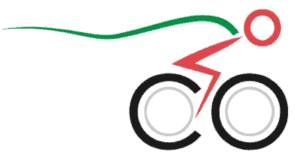One of the most important pieces of equipment on your bicycle is your tires. It is the main point of contact between your bike and the road surface. Think of your tires like a pair of shoes. A decent pair of shoes will keep your feet comfy, warm, and dry. The same can be said for your tires whereas a good set on your bike will keep your ride smooth, comfortable, and most importantly free from flats.
The only problem is there are so many tires to choose from with different sizes, tread patterns, and flat protection.
Read on to find out about the pros and cons of each tire, how they can affect or improve your ride, and some of our recommendations for the best tires in each category. Without further ado, let’s jump right in!
How Commuter Tires Are Different
Just like bikes, any tire can be used for commuting. From the super skinny and treadless varieties to the big old fatties loaded with rubber tread. That being said some tires are better constructed to handle the rigors of commuting and also provide a far better experience overall.
Electric bikes built for everything and priced for everyone. Shop Rad Power Bikes, America's #1 electric bike brand. Get out. Go further. Ride Rad.
When looking for tires to put on your commuter rig there are a few key points to look out for such as puncture protection, rolling resistance, and build quality. While there is no one perfect tire for all commuters it is a good idea to consider those characteristics when looking into tires. This applies to both the strictly asphalt commuter and the mixed terrain commuter alike.
There is a bewildering amount of tire sizes and types for a bicycle so let’s go ahead and take a look at some of the most common and how they might be beneficial to you.
What is a 700c tire?
700c is the modern designation for any tires that have a Bead Seat Diameter or BSD that is 622mm. These types of tires are typically found on road bikes, touring bikes, gravel bikes, and hybrids. They can range from the very thin 22mm racing tire types to wider rims of 45mm or more for touring or cyclocross setups.
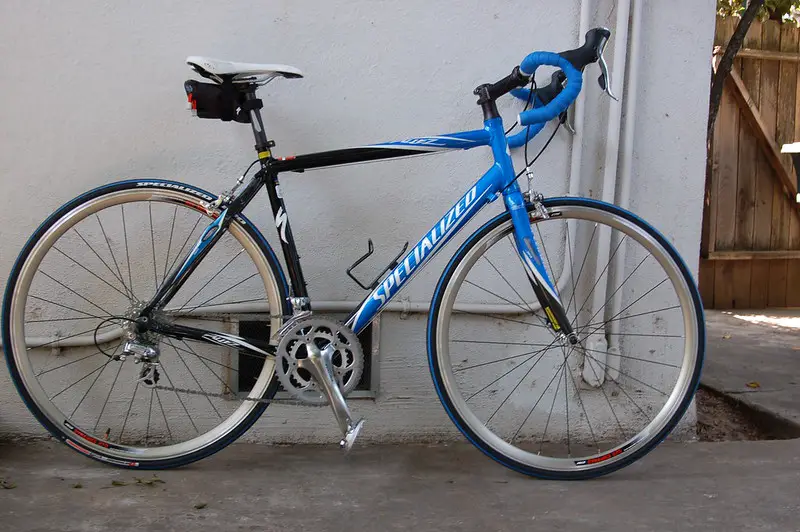
The term 700c comes from many years ago when there were four different versions of tires sizes available 700a, 700b, 700c, and 700d. They all had differing Bead Seat Diameters but were unified with one characteristic, the outside diameter was all 700mm. This made it easy for bike racers of the day to swap out wheelsets based on road conditions and goals.
The thinnest would be used for race day while the thicker sets would be used for rough roads or training. No matter which they chose to use, they could be sure it would fit into their frame.

As time wore on and for a variety of reasons the sizes other than 700c became less popular and dropped out of use. 700c would stick around till the modern-day and in actuality has become the standard size used in modern road bikes.
700c also has some excellent characteristics that make it a very popular commuter wheel and tire size. They offer less rolling resistance, better rollover capabilities, and they carry more momentum.
Many riders of 700c will just tell you, “they are faster!” This has led 700c to be considered by many the best tire size for a commuter bike, especially in the 28mm to 45mm range.
Some of our favorite tires in this size are Schwalbe Marathon Plus, Continental Ride Tour, Continental Gatorskins, and Continental Contact Plus.

What is a 26-inch tire?
Standard 26-inch tires will have a Bead Seat Diameter of 559mm. They are very common on older mountain bikes and beach cruiser style bikes. They typically will have a width of 1.75 inches to 2.2 inches with some downhill oriented tires at 2.5 inches and snow tires that can even be up to 6 inches wide.
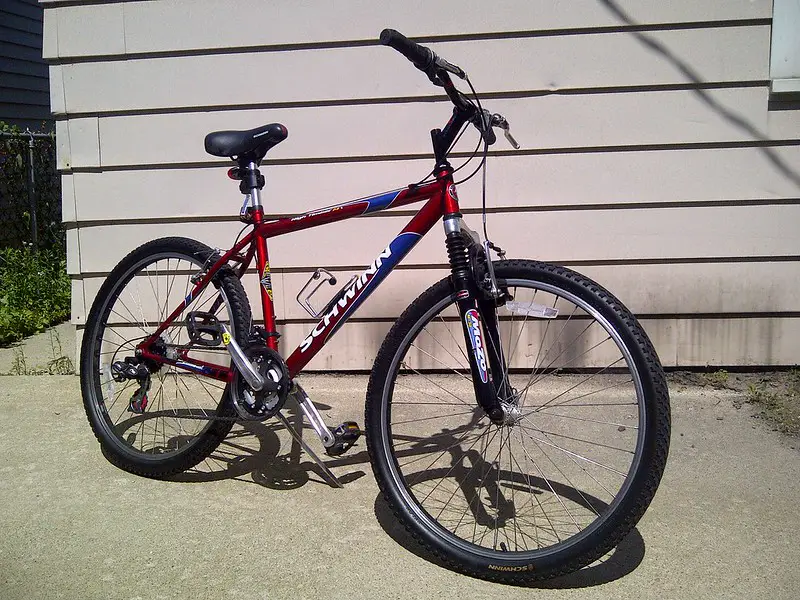
Modern 26-inch tires got their popularity in the 90s. Back when mountain biking was being developed it was done so by converting beach cruisers into mountain riding machines.
The most common tire size on beach cruisers at that time was the 26-inch tire. This made it become the de facto tire size for mountain bikes for many years to come.
26-inch tires are still commonly found on many beach cruisers and comfort hybrids. However, in recent years they have fallen out of favor with mountain bikers due to advancements in 27.5-inch and 29er tire varieties.
Despite this style of tire on the decline throughout the industry, they do offer a few benefits. These include things such as stronger wheels, lower weight, faster acceleration, and easier to handle.
Since 26-inch wheels are smaller the spokes are shorter and closer to the hub. This not only makes them stronger but also more lightweight and as a result, 26-inch tires are often considered much better at accelerating.
With less rotational mass not only will your acceleration benefit but they are also much easier to control especially through tight turns.
The only real drawbacks are they do not have a higher speed like some larger types and they are getting increasingly harder to find as others dominate the market.
Some of our favorite 26-inch tires for commuters are Kenda Tires K838 Commuter, Continental Ride Tour, and Vittoria Evolution tires.
What is a 27.5-inch tire?
When you hear 27.5-inch tires it is more often than not going to refer to mountain bikes. They are a large volume tire that is approximately 27.5 inches in diameter on a 584mm rim. 27.5-inch tires are viewed as a compromise between the easy maneuvering of the 26-inch tire and the speed and rollover capabilities of the 29er.
This is where things get a bit confusing.
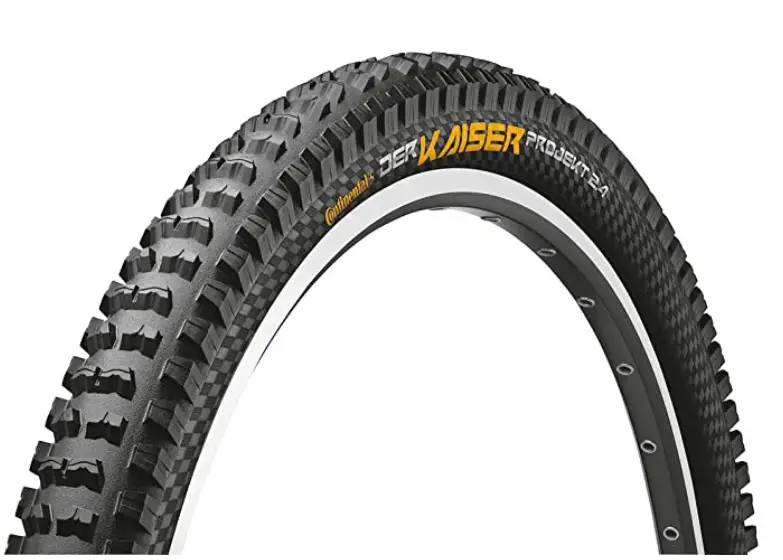
27.5-inch tires are also what is known as 650b, however, depending on the application they are designated differently for marketing purposes. 27.5-inch tires almost always apply to tires that are primarily intended for mountain biking use. Although they are being quickly replaced by the more common and popular 29er tire, they do have a loyal following of die-hard fans.
Riders who use them swear by them and claim they have the fast acceleration and easier handling of the smaller 26-inch tires but with better rollover and momentum of the larger 29er. It is often viewed as a compromise between the two.
27.5-inch tires are also available in a variety of plus-sized tire options that make them excellent for loose gravel and snowy situations. While 27.5 tires are not the best option for pavement commuters they do make excellent mountain bike tires. This means that if your commute is over mixed terrain types or on dirt trails then these might be the perfect tires for you.
They often combine the perfect blend of speed and maneuverability that many mountain bikers love.
Some of our favorite 27.5-inch tires include Maxxis Minion DHF 3C/EXO, Vittoria Mazza, Maxxis Dissector, Maxxis Minion DHR II, and Continental Der Kaiser Projekt ProTection Apex.
What is a 29er tire?
29er tires refer to tires that are approximately 29 inches in diameter. They share the same Bead Seat Diameter of 622mm as 700c tires but are sized using “English” measurements to differentiate them from road tires. 29ers have become the go-to for most mountain bike designs as 26-inch and 27.5-inch have fallen out of favor.
During the mountain bike boom of the 80s and 90s, mountain bikers knew that a larger wheel and tire would lead to more speed and better rollover capabilities.
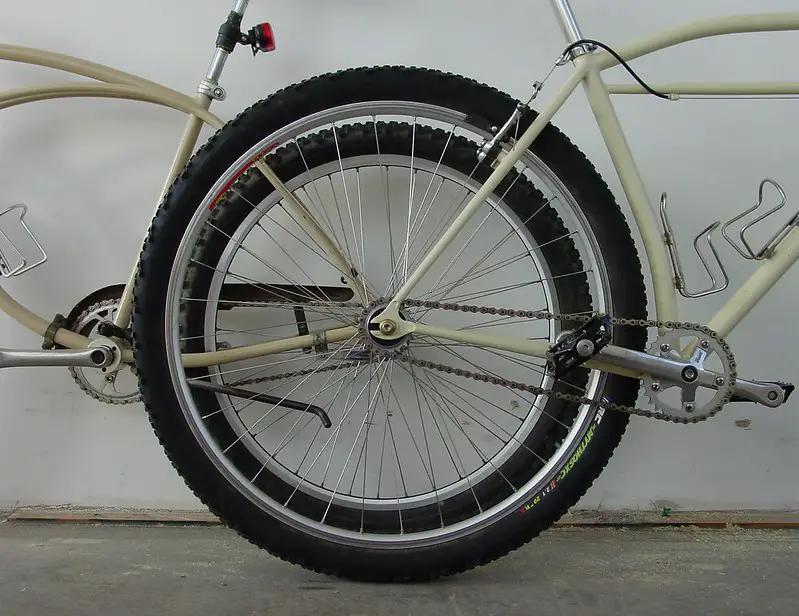
The problem was that most mountain bikes were designed off of beach cruisers using the more common 26-inch wheel. Coupled with the fact that it was hard to get larger wheels for bikes at the time, it was rare that you would see a mountain bike with anything other than a 26-inch tire.
There were a few pioneering individuals back then who experimented with 700c wheels and wider tires to develop the 29er mountain bike. Flash forward about 20 or 30 years and it has become the standard in the industry with it increasingly harder to find mountain bikes with the 27.5 inches or 26-inch varieties. Now the smaller sizes are often left to niche bikes with a specialized purpose.
While the 29er is often found on a mountain bike it is almost the same size as a 700c tire. This also means that 29ers share many of the same characteristics that lend it to being a solid commuter wheel and tire size.
Mountain bikes, especially the hardtail variety make awesome winter and bad weather commuting machines. They go fast and have great rollover capabilities while also providing space for wide treads that grip the road in all weather conditions.
29er tires would also be perfect for the commuter who has a mixed terrain commute or one that is on dirt paths or roads. Perhaps they are even the perfect option for the commuter looking to have one bike for weekend adventures as well as the daily ride to work.
There are many great tires available in the 29er variety that are perfect for commuting. Our favorite for commuting on the pavement is the Maxxis Hookworm, for dirt or mixed terrain we love Michelin Jet XCR, Maxxis Minion, and WTB Riddler.
What is a 650b tire?
650b tires are the same size as 27.5-inch tires. However, the term 650b will often refer to tires that are installed and used on road, gravel, or cyclocross bikes. They are considered an alternative to the more traditional 700c tire and offer a few benefits over them.
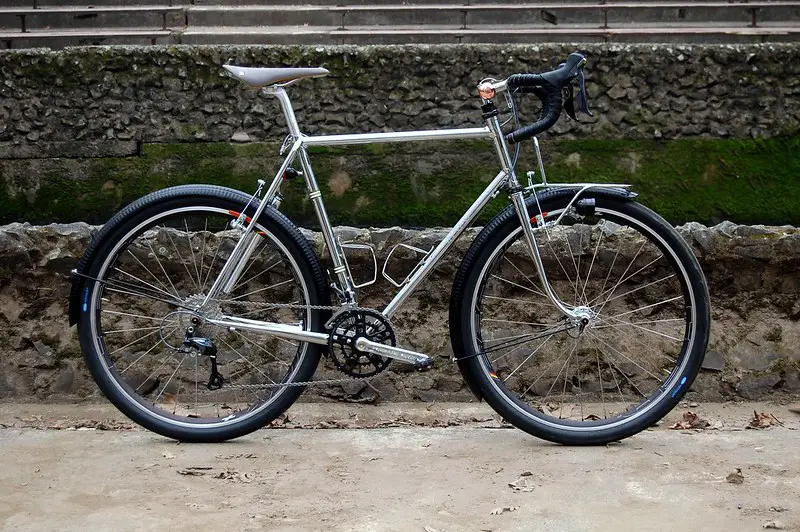
650b Tires share the same Bead Seat Diameter of 584mm as the 27.5-inch tires. The major difference is that the term 650b is usually marketed to the gravel or cyclocross end of the spectrum versus the mountain bike end.
Generally, when it comes to biking there are two very broad categories of bikes. Mountain Bikes and Road Bikes.
Mountain bikes will generally use the “English” measurements of inches so for example 26X2.0, 27.5X2.75, and 29X3.0. The broad mountain bikes category will often include not only mountain bikes but also cruisers, hybrids, and many other bikes that use the “English” measurement system.
On the other hand, there are road bikes and they use the metric measurement system such as 650X32 or 700X40. This is the common sizing for road bikes such as touring, gravel, cyclocross, fitness, and hybrid bikes. Boy bicycle terminology can sure be confusing!
650b tires offer some unique advantages especially for those who dabble in the gravel or cyclocross end of the spectrum. These benefits include the ability to mount higher volume tires that offer more grip and better bump absorption.
The smaller diameter of the 650b tires allows you to run a higher volume tire in the same frame as a 700c bike. This means that a second wheelset could be prepared and put off to the side for rain, snow, or other inclement weather demanding more traction. They are also perfect for the mixed terrain commuter looking for something to tackle the dirt parts of your commute.
Some of our favorite 650b tires for commuters are Continental Contact Speed Reflex, Schwalbe G-One Ultrabite, Panaracer Gravel King, Kenda Flintridge Pro, WTB Horizon, and Vittoria Terreno Zero TNT.
Side By Side Comparison
| 700c | 650b | 26-inch | 27.5-inch | 29er |
| Pros: | Pros: | Pros: | Pros: | Pros: |
| Lower Rolling Resistance | Higher Volume Tires | Stronger | Easier to Handle | Lower Rolling Resistance |
| Carries Momentum Better | Better Bump Absorption | Lighter Weight | Better Acceleration | Carries Momentum Better |
| Better Rollover | More Traction | Easier to Handle | Better Bump Absorption | Better Rollover |
| Higher Top Speed | Better Acceleration | Better Acceleration | Higher Volume Tires | Higher Top Speed |
| Easier to Handle | Easier to Handle | |||
| More Traction | ||||
| Cons: | Cons: | Cons: | Cons: | Cons: |
| Slower Acceleration | Slower Top Speed | Slower Top Speed | Slower Top Speed | Slower Acceleration |
| Harder to Handle | Reduced Rollover | Reduced Rollover | Reduced Rollover | Harder to Handle |
FAQ
Does the width vary based on the diameter?
Yes, however, there is considerable overlap between diameters and width. For example, a 29er can be as thin as 1 inch or as wide as 4 inches.
Generally, 700c tires will run much thinner than the others but even then there are models of 700c that are very wide for gravel and cyclocross bikes.
Usually, mountain bike tires such as 26-inch, 27.5-inch, and 29er will be much fatter and wider than 700c or 650b.
But keep in mind there are always exceptions to the rule.
How do I determine the right size?
On every tire, no matter the diameter the size will be shown on the sidewall. This can help you to determine if the tire is the right size for your rim and also will give you the information you need to pick out the right inner tubes for the tire.
When trying to determine the correct size tire for your usage it is a good idea to think about what you are using them for. If trying to go fast on smooth pavement then a 700c thin road style tire is going to be ideal. If you are looking for serious traction on a mixed terrain then it might be best to look into thick mountain bike tires of 26-inch, 27.5-inch, or 29er.
Type of valve matters: Presta vs Schrader
Presta (French) versus Schrader (American) which one is best? It often depends on the application.
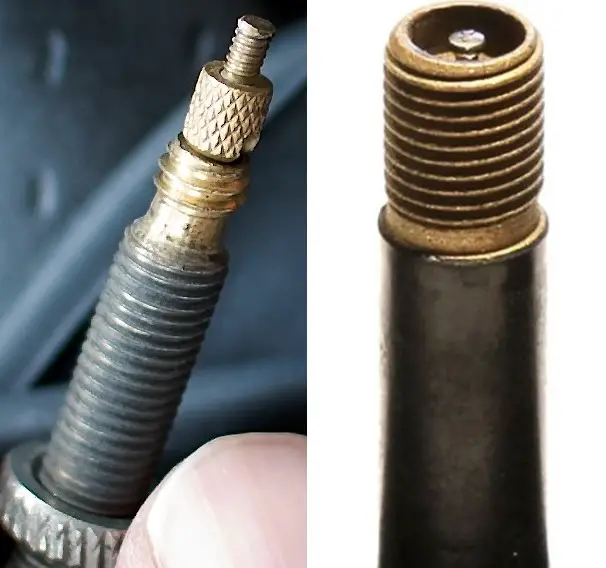
Presta valves are a little more difficult to use and can be cumbersome especially for beginners. However, they are generally found in thinner road style rims because a narrower rim leaves less room for the clincher style beads. Since the Presta valve is narrower it fits better than a Schrader would. As a bonus, the hole for the Presta valve is much smaller which allows the rim to be stronger overall.
On the other hand, Schrader valves are more prevalent and easier to pick up for the beginner. This is because most people are familiar with them before even riding a bike as they are the standard valve type for most cars. They are also more robust and have an easy to remove valve core making it simple to replace or add tire sealant.
Schrader valves are common on many bikes with wider rims as the larger hole does not impact the strength of them nor does it interfere with the clincher beads of the tires.
It is worth noting however that many bike tires these days are moving towards Presta valves even for the larger mountain bike style rims.
Conclusion
That sure is a lot of information to process! We hope it helps you when you are deciding what type of tires and wheels to put on your bike or what kind of bike you want next.
As you can see all tires have their unique advantages and disadvantages but some are going to be better suited to commuting than others. Generally, it all comes down to the type of commute you have, the terrain, and what you are looking for.
Hopefully, the above info helps you, in the long run, to pick the perfect tire for your bike, your riding style, and your commute.
Happy Pedaling!
